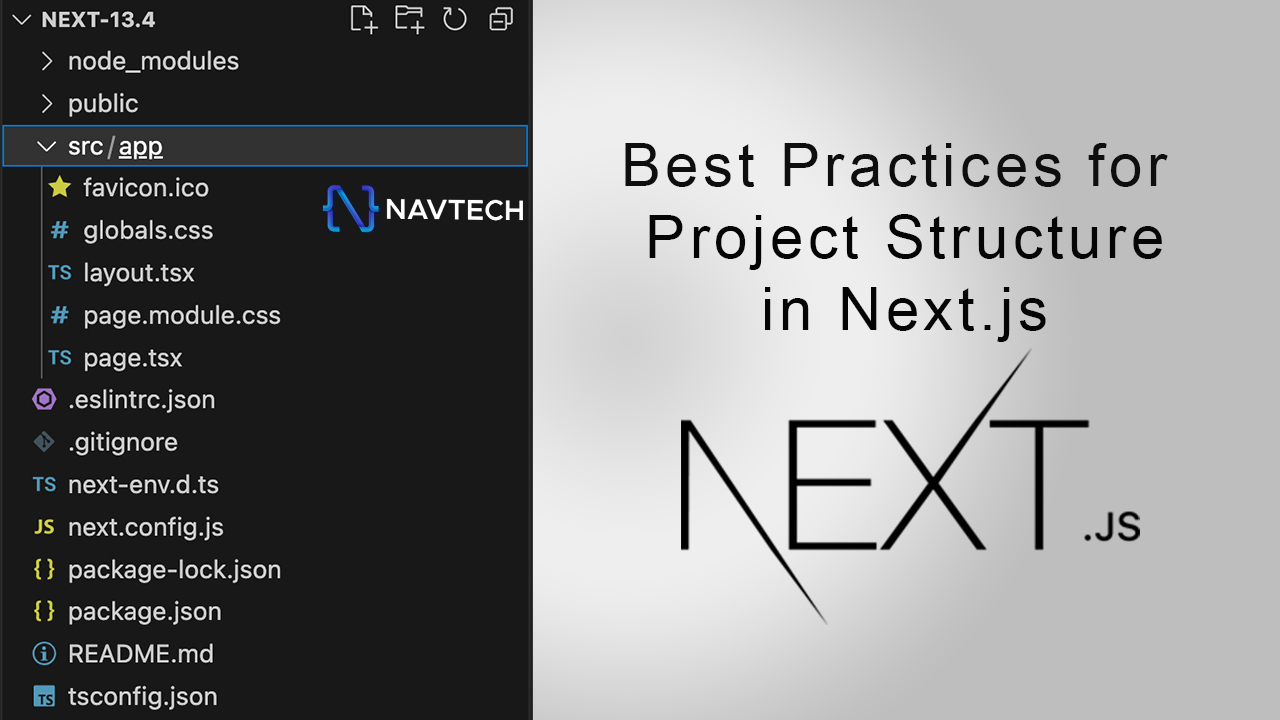Organizing Your Next.js Project: Making It Simple and Effective-
When you’re working on a web project using Next.js, one of the first things you will need to tackle is how to organize your project structure. A well-organized project not only makes your life easier. In this blog some best practices for structuring your Next.js project in a simple and effective way.
Why Does Project Structure Matter?
Firstly we divide into specific manner. Why project structure matter is important. Lets now discuss on various points below.
- Improves Readability: It’s easier for you and your team to understand and maintain the code.
- Enhances Collaboration: Team members can work more efficiently when they know where to find things.
- Easily Debugging: Debugging becomes less of a headache when your code is logically organized.
app | App Router |
pages | Pages Router |
public | Static assets to be served |
src | Optional application source folder |
Best Practices for Next.js Project Structure.
- Separate Concerns with Components: Break down your user interface into reusable components. Store them in a dedicated directory like components. This approach promotes code reusability and maintainability.
- Pages for Routing: Next.js uses the pages directory for routing. Each JavaScript or TypeScript file in this folder becomes a route in your application. Keep this directory clean and straightforward to manage your routes effectively.
- Styles and CSS: For styling, you can use CSS modules, styled-components, or your preferred styling approach. Place your styles in a dedicated folder or alongside your components.
- API Routes : If you need serverless functions or API endpoints, create a folder named api. Next.js automatically sets up serverless routes within this directory.
- Utilities and Helpers : Store utility functions and helper classes in a separate directory, making them easily accessible when needed.
- Configuration : Centralize configuration files, environment variables, and constants in one place. This can help you manage different environments (development, production) efficiently.
- Assets : Store static assets like images, fonts, and icons in an assets directory. This keeps your project organized and your paths consistent.
| Folder convention | ||
index | .js .jsx .tsx | Home page |
folder/index | .js .jsx .tsx | Nested page |
| File convention | ||
index | .js .jsx .tsx | Home page |
file | .js .jsx .tsx | Nested page |
| Next.js | |
next.config.js | Configuration file for Next.js |
package.json | Project dependencies and scripts |
instrumentation.ts | OpenTelemetry and Instrumentation file |
middleware.ts | Next.js request middleware |
.env | Environment variables |
.env.local | Local environment variables |
.env.production | Production environment variables |
.env.development | Development environment variables |
.eslintrc.json | Configuration file for ESLint |
.gitignore | Git files and folders to ignore |
next-env.d.ts | TypeScript declaration file for Next.js |
tsconfig.json | Configuration file for TypeScript |
jsconfig.json | Configuration file for JavaScript |
postcss.config.js | Configuration file for Tailwind CSS |
Conculsion-
A well-structured project not only helps you during development but also when you revisit the code in the future. So, take the time to set up a clean project structure at the beginning — it will pay off in the long run.



